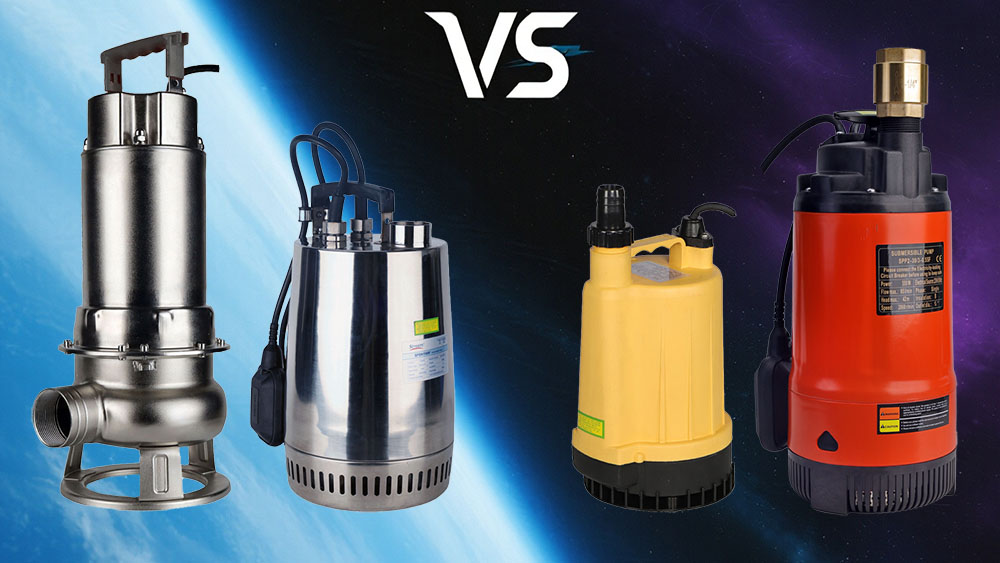+86 13816508465
Aug. 13, 2025

When it comes to submersible pumps, selecting the right pump housing material is crucial for performance and durability. Pump housing serves as the shell that protects a pump's internal components from external conditions. The material you choose will directly impact the pump's resistance to wear, cost, longevity, and suitability for specific applications. This guide dives into the comparison between stainless steel and plastic pump housing, helping you weigh your options and make an informed decision.
Pump housing refers to the outer casing that encases and safeguards a pump's inner mechanisms, such as the motor and impellers. It bears the brunt of environmental pressures and protects the pump from water, debris, and corrosive elements.
Submersible pumps, commonly used in wells, drainage systems, sewage management, and aquaculture operations, face unique challenges. These environments often include high pressure, corrosive substances, and varying water quality. Your choice of housing material should align with these conditions, ensuring optimal functionality and longevity.
Stainless steel is widely regarded as a premium choice for submersible pump housing. Its robust characteristics make it an ideal material for handling challenging environments.
Key Characteristics
High strength and durability
Excellent corrosion resistance
Tolerance to wear and harsh conditions
Ideal Applications
Stainless steel pump housing is particularly suitable for:
Deep wells with high water pressure: Its strength allows it to withstand the extreme forces in deeper water systems.
Aggressive or contaminated water: Stainless steel can resist damage from sediment, chemicals, and debris.
Industrial and agricultural use: Its durability makes it perfect for long-term, heavy-duty applications in industries like irrigation and manufacturing.
Advantages
Higher Pressure Tolerance: Stainless steel can handle higher operating pressures without deforming or failing.
Extended Lifespan: Its resilience against external stresses allows it to last significantly longer, even under demanding conditions.
Professional Appearance: Stainless steel is not only functional but also provides an aesthetic, high-quality finish.
Disadvantages
Higher Cost: The premium qualities of stainless steel come at a price, making it more expensive than alternative materials.
Heavier Weight: Stainless steel is heavier, which can slightly complicate installation or transport.
Plastic pump housing offers a practical and cost-effective alternative to stainless steel, particularly for less demanding applications.
Key Characteristics
Lightweight and easy to handle
Completely resistant to rust or corrosion
Economical pricing suitable for budget-conscious buyers
Ideal Applications
Plastic pump housing is a great fit for:
Residential and light-duty use: Perfect for home water systems or low-pressure environments.
Clean water applications: Best suited for pumping non-corrosive, debris-free water.
Cost-sensitive projects: Plastic's affordability makes it a go-to for those on a tight budget.
Advantages
Affordable: Plastic housing is a fraction of the cost of stainless steel, making it a readily available option for light use.
Rust-Proof: Unlike metal, plastic cannot corrode, ensuring a maintenance-free exterior.
Lightweight: Its lightweight nature simplifies installation and handling.
Disadvantages
Lower Pressure Resistance: Plastic is not designed for environments with high water pressure or heavy mechanical stress.
Degradation in Harsh Conditions: Extended exposure to UV light or harsh chemicals can weaken plastic over time.
Feature | Stainless Stee | Plastic |
Weight | Heavy | Light |
Corrosion Resistance | Excellent | Good (rust-proof but less durable under certain exposures) |
Durability | High | Low to moderate |
Pressure Resistance | Handles high-pressure systems | Limited pressure tolerance |
Typical Applications | Industrial, Deep Wells, Sewage | Residential, Clean Water |
Cost | Higher | Low |
Choosing your pump housing material boils down to analyzing your specific needs and application. Here are some key questions to consider:
What is the water quality?
Will the pump handle clean water, dirty water, or corrosive substances? Stainless steel is a better choice for harsh and muddy environments, while plastic is suitable for clean, non-aggressive water.
How often will the pump be used?
For heavy, everyday use, stainless steel offers the durability you need. For occasional or light-duty purposes, the affordability of plastic will suffice.
Is the pump for residential or commercial use?
A residential water system might only require a lightweight, inexpensive option. Meanwhile, industrial or agricultural settings demand the robustness and longevity of stainless steel.
What is your budget?
Stainless steel provides superior features but at a higher cost. If affordability is key, plastic can meet your needs for less intensive applications.
Recommendation Scenarios
Choose stainless steel for durability, reliability, and performance in tough environments.
Choose plastic for a lightweight, affordable solution tailored to residential or light-duty settings.
The choice between stainless steel and plastic pump housing ultimately depends on the specific demands of your application. While stainless steel excels in strength, durability, and performance under extreme conditions, plastic is a cost-effective, lightweight option for less intensive use.
There is no one-size-fits-all solution—your decision should be guided by factors like water quality, usage frequency, and budget constraints. Need further help deciding? Consult with a pump expert today to determine the perfect housing for your submersible pump needs!
Address
No.17 XeDa Jimei Ind. Park, Xiqing Economic Development Area, Tianjin, China
Telephone
+86 13816508465
QUICK LINKS